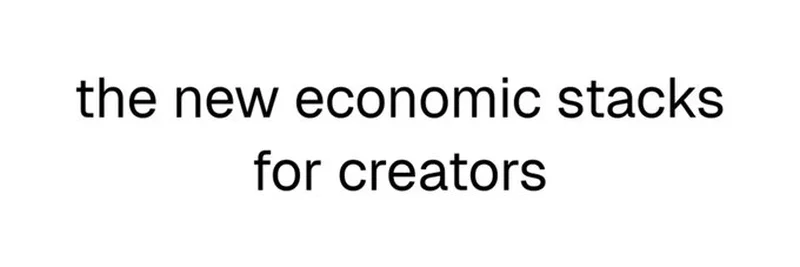Hey there, meme enthusiasts and blockchain buffs! If you’ve been keeping an eye on the crypto space, you might have noticed a buzz around a tweet from limone.eth on July 25, 2025. The post highlights an exciting development: the rise of new economic stacks for creators. This isn’t just another trend—it’s a game-changer for how creators can earn money in the digital age. Let’s break it down and see what it means for the future!
What Are Economic Stacks for Creators?
In simple terms, an economic stack is a set of tools and platforms that creators—like artists, writers, or even meme makers—can use to monetize their work. Think of it like a toolbox, but instead of hammers and nails, you’ve got tipping bots, tokenized posts, and decentralized marketplaces. The tweet points to a new wave of these stacks, powered by blockchain technology, which is shaking up the traditional creator economy.
limone.eth suggests that platforms like Farcaster, Zora, and Base App are at the forefront. These platforms let creators experiment with innovative ways to earn, such as:
- Tipping with Noicebot: A quick and easy way for fans to send tips directly to creators.
- Buying Post Coins on Zora: Turning a social media post into a tradable token using Zora’s Creator Coins.
- Bidding on Collectibles: Fans can bid on unique digital items tied to a creator’s work on Farcaster.
Pretty cool, right? It’s like turning a tweet into a mini investment opportunity!
Why This Matters in 2025
The creator economy has been booming, with millions of people worldwide calling themselves creators. According to trends we’ve seen, this space is evolving fast, especially with the help of AI and blockchain. The tweet asks a big question: Are these platforms competing, or are they building toward a better future for creators? It’s a bit of both, really.
On one hand, each platform offers unique perks. For instance, the Paragraph model mentioned in the thread focuses on a less “financialized” approach, which might feel more approachable for creators who aren’t crypto experts. On the other hand, the integration of these tools on Farcaster shows a push toward a unified ecosystem where creators can test multiple revenue streams at once.
The Bigger Picture: Meme Tokens and Beyond
At Meme Insider, we’re all about tracking the wild world of meme tokens and blockchain innovations. While the tweet doesn’t mention meme tokens directly, the concept of tokenizing content (like posts or collectibles) aligns with how meme coins—like Dogecoin or Shiba Inu—started. Could we see meme-inspired economic stacks in the future? It’s not hard to imagine a meme creator launching a token tied to their latest viral post!
The thread also hints at a “psychological burden” being eased by some models, suggesting that these new stacks aim to make monetization feel less stressful. That’s a win for anyone trying to turn their passion into profit without losing their sanity.
What’s Your Take?
limone.eth throws out a fun challenge: What’s your bet on where this is headed? Are these platforms destined to compete fiercely, or will they collaborate to create a more open digital frontier? Some replies, like from nounspacetom.eth, compare it to a sci-fi story unfolding live, while others, like Samuel, praise the less financialized approach of Paragraph.
As we head deeper into 2025, this experiment could redefine how creators—especially those in the meme and crypto space—earn a living. Whether you’re a creator or just a fan, it’s worth keeping an eye on Farcaster, Zora, and the rest of this evolving stack.
So, what do you think? Drop your thoughts in the comments, and let’s chat about the future of the creator economy! If you’re new here, subscribe to Meme Insider for the latest on meme tokens and blockchain trends. Let’s ride this wave together!



